Tutorial to create a geospatial Voronoi-sh mesh with Python, Scipy and Geopandas
/Divide a continuous media as a hydrological / hydrogeological basin into discrete parts is an art. Cell size have to related to hydrological features, cell number have to be optimized to cover areas of interest with an adequate refinement while minimizing the total cell number. The computational process has be fast to allow user run multiple times to achieve a desired mesh.
We have done a tutorial that creates a Voronoi-sh mesh over shapefiles with several options for refinement and polygon relaxation, resulting polygons are clipped to the mesh boundary and exported as shapefile or geojson. The script was done with Python, Scipy, and Geopandas.
Video
Screenshots
These are some screenshot of the shape geoprocess and mesh generation.
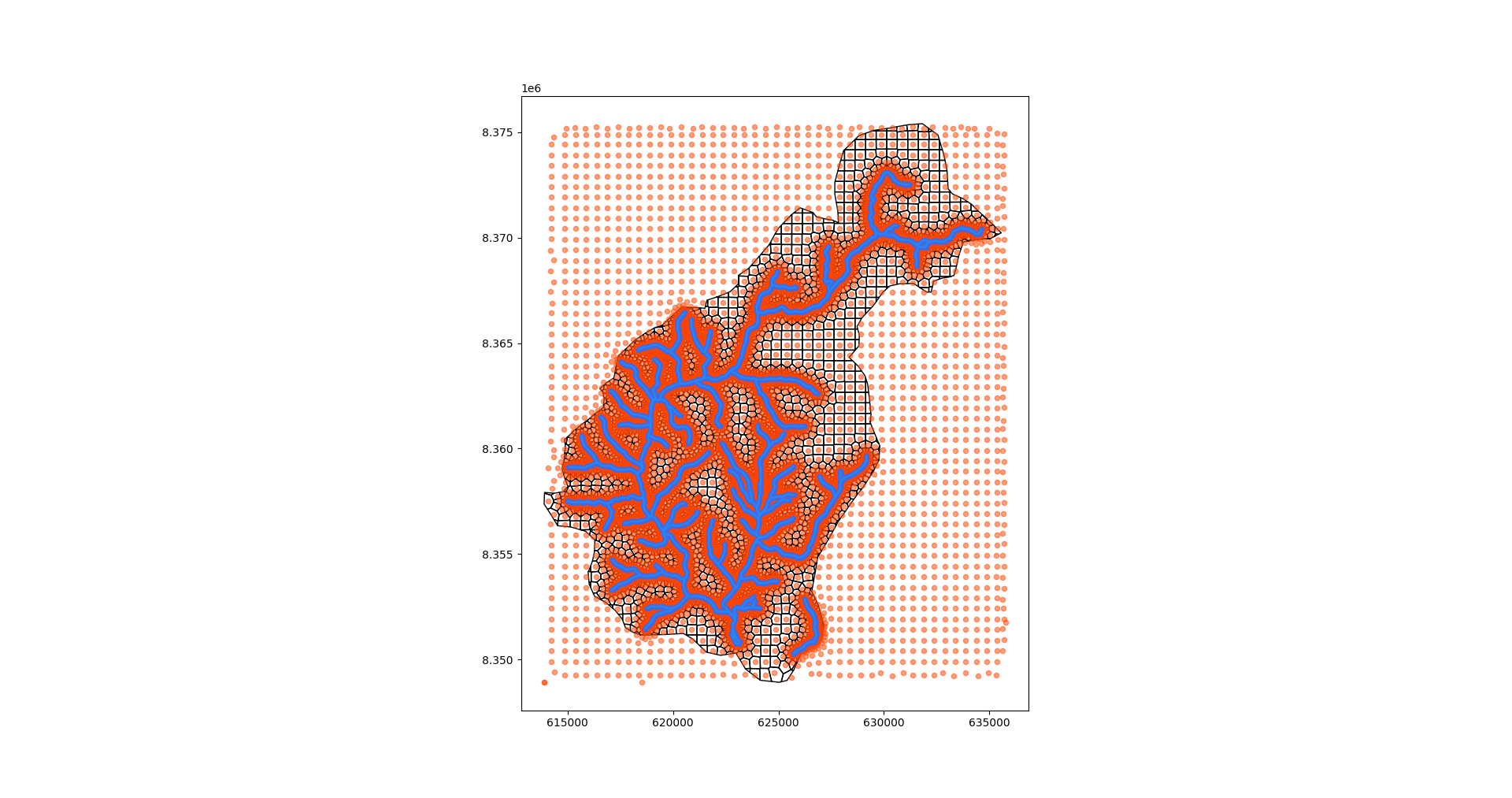
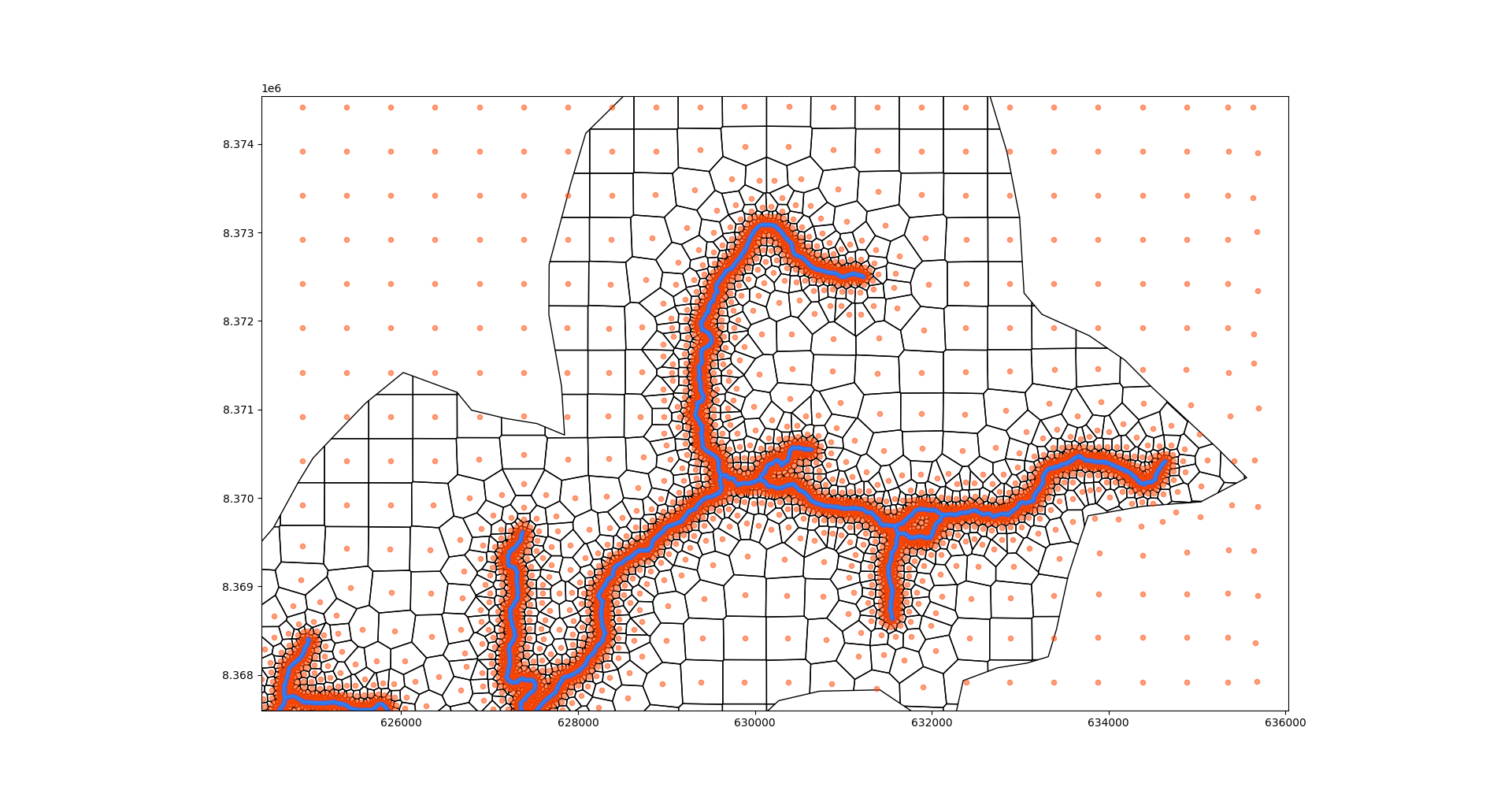
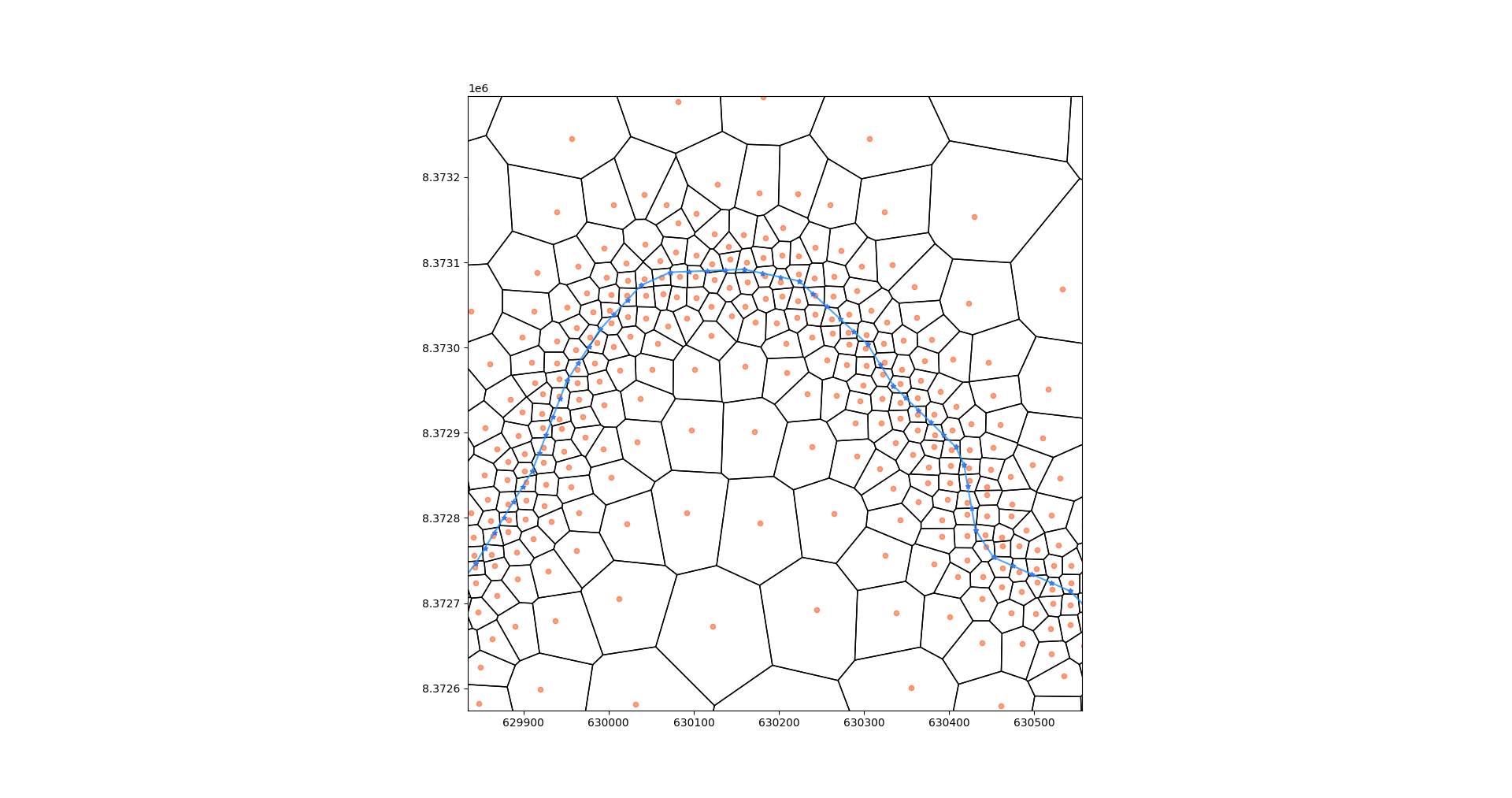
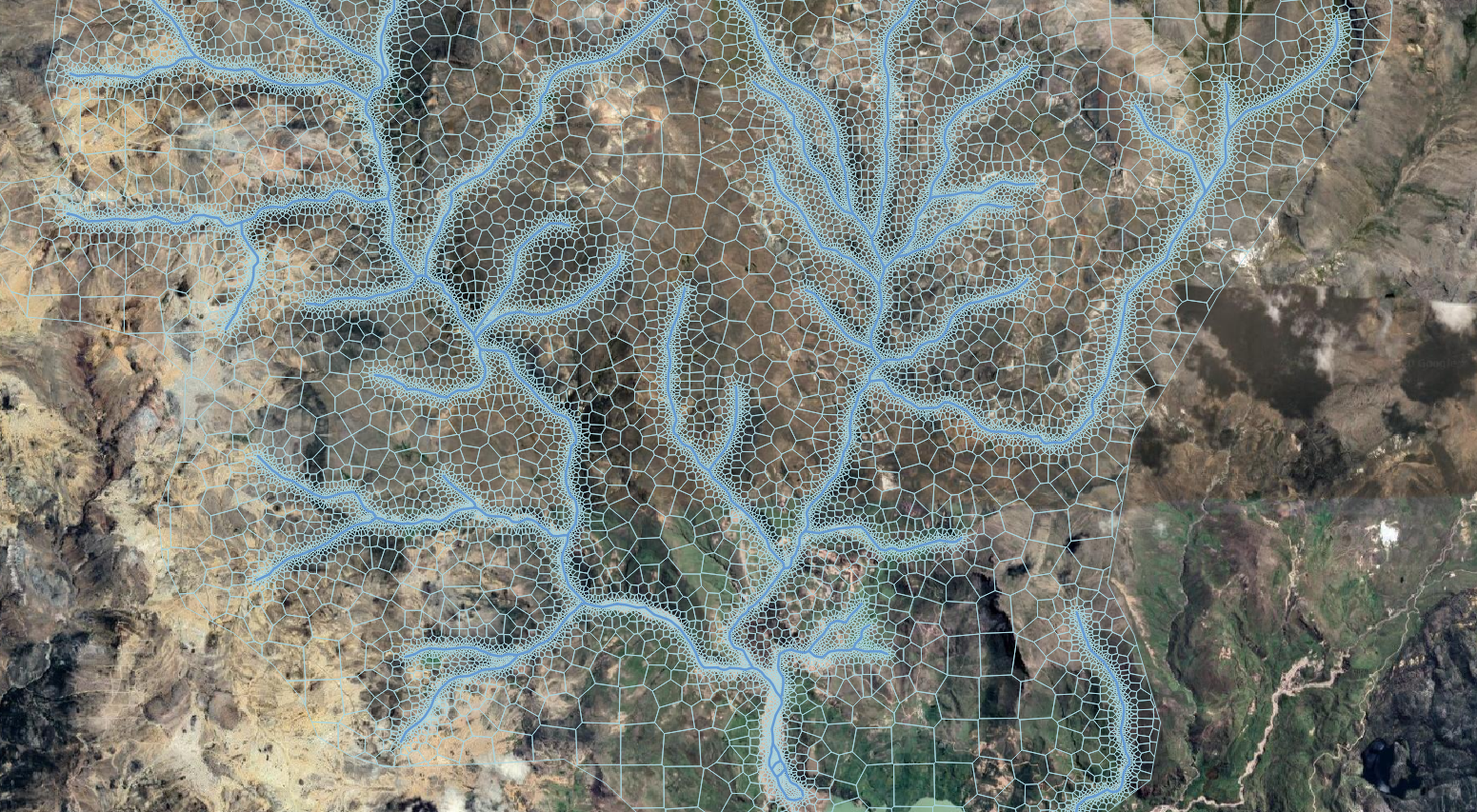
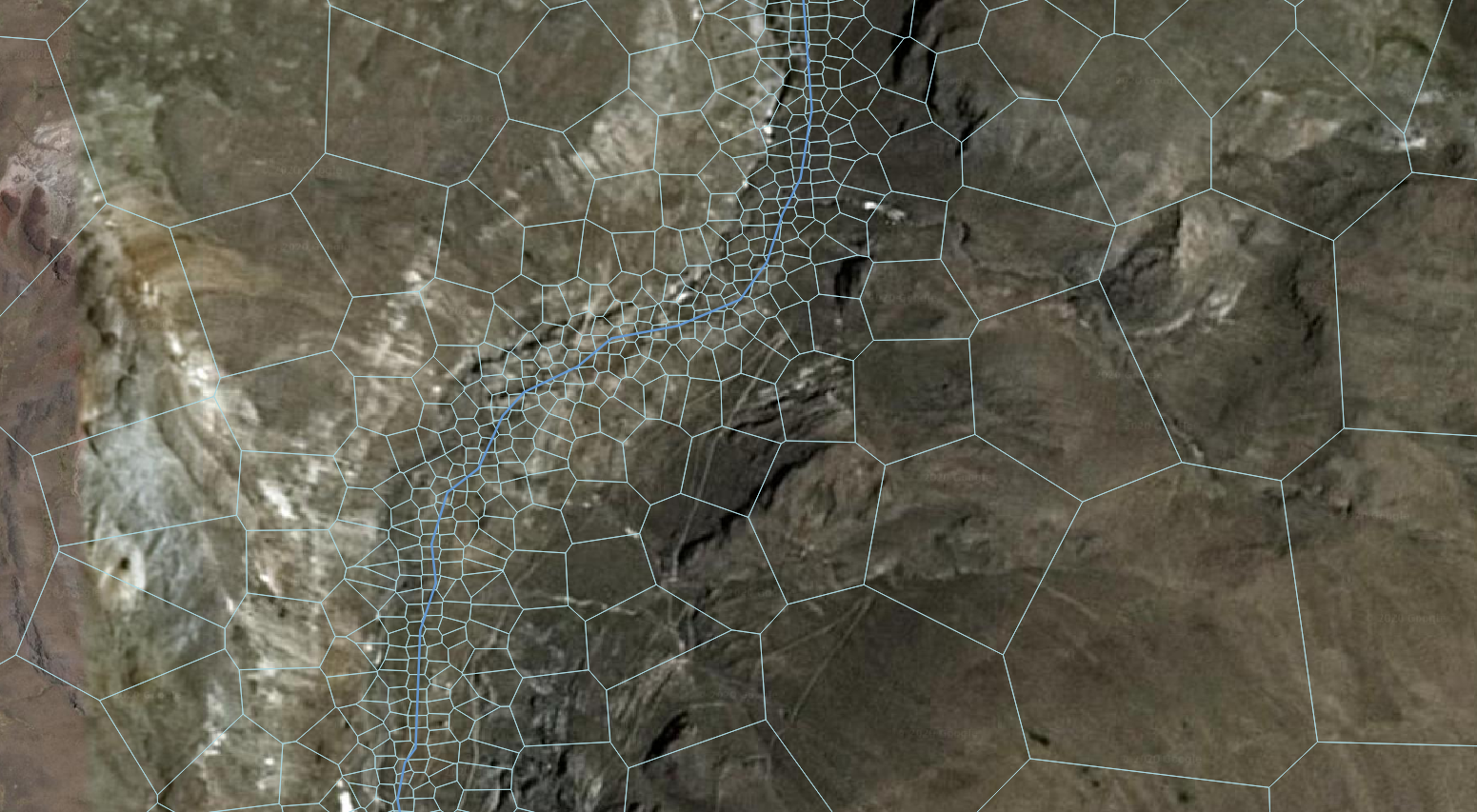
Scripts
This is the script that applies the Python classes to create a geospatial Voronoi-sh mesh. All the script and shapefiles are in the Input Files section.
from geoVoronoi import createVoronoi import matplotlib.pyplot as plt import geopandas as gpd import numpy as np import time #Create mesh object vorMesh = createVoronoi() #Open limit layers and refinement definition layers vorMesh.addLimitLayer('basin','../shps/Angascancha_Basin_Extension.shp') vorMesh.addDefinitionLayer('river','../shps/rios.shp') #Generate point pair array start = time.time() vorMesh.domainPairArray() end = time.time() print('Total time required for: Generation of total points %.2f seconds \n'%(end - start)) #Relaxation of voronoi polygons start = time.time() vorMesh.relaxVertices() end = time.time() print('Total time required for: Relaxation of total points %.2f seconds \n'%(end - start)) #Create polygon object and clip to the limit layer start = time.time() vorMesh.createClipVoronoi() end = time.time() print('Total time required for: Voronoi gridding %.2f seconds \n'%(end - start)) #Save clipped polygons to shapefile o geojson vorGdf = gpd.GeoDataFrame(vorMesh.vorClip) vorGdf.to_file('../shps/voronoiGrid.shp') #Generate graph with geo features, refinement vertex, relaxed points and clipped voronois partialPairArray=np.array(vorMesh.geom['partialPairList']) fig, ax = plt.subplots(1, 1, figsize=(20,20), sharex=True, sharey=True) vorMesh.vorClip.plot(ax=ax, facecolor="none", edgecolor='black') ax.scatter(vorMesh.pairArray[:,0],vorMesh.pairArray[:,1],s=10,alpha=0.5,c='orangered') ax.scatter(partialPairArray[:,0],partialPairArray[:,1],marker='*',s=10,c='royalblue') for key, array in vorMesh.arrays.items(): array.plot(ax=ax, facecolor="none",edgecolor='dodgerblue', alpha=0.8) plt.show()
























